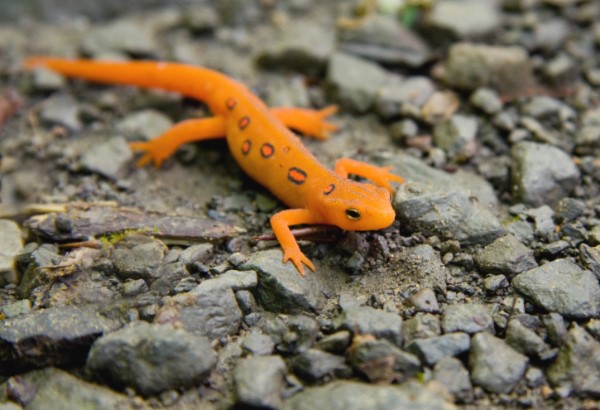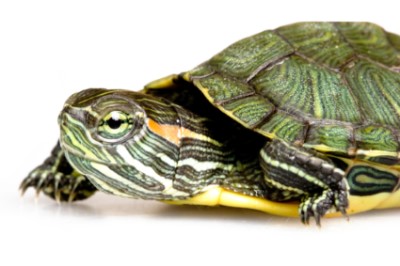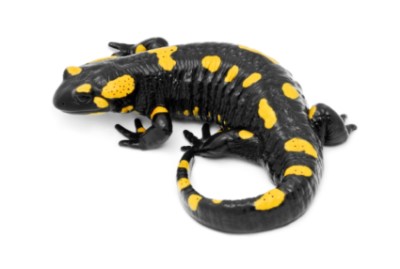Common Reasons for Surrender
Salamanders and newts are sometimes surrendered because the family is moving and doesn’t want to take the pet with them. A reptile can cling to life and linger a long time, but that’s not the case with amphibians. If you see an open wound or a skin infection, they go quickly.
Pros
Owners of these fascinating amphibians say that it’s fun to set up the naturalistic environment required for newts and salamanders—a great classroom project for school children. It can be fun to watch them become active and some salamanders and newts will come out and beg for food from their keepers.
Cons
It’s important to be diligent in keeping the cage clean. Some need soil of a specific constitution (acidic or non acidic depending on the salamander) to dig in. Some need water. Some salamanders and newts actually drown easily and need a shallow water dish rather than a larger aquatic area. Some newts and salamanders are aquatic all their lives and some are not. Part of the difficulty in owning this pet is taking the time in educating yourself on your particular newt or salamander before you take one home.
Diet
Most salamanders and newts are insectivores and will eat live mealworms, night crawlers, crickets, snails, or slugs. Be sure to feed your pet every two days. There are no vegetarian salamanders or newts.
Exercise
Newts and salamanders will naturally exercise themselves in their natural habitat.
Possible Health Issues
Fungal infection is a worldwide problem that wipes out amphibians. If you buy one, you may have one that is already infected without you knowing it. This infection is a fungus that shows up in skin lesions. If you have an aquatic salamander or newt, you can buy an anti-fungus medicine that is available for fish, a remedy that usually works for aquatic amphibians. The other problem to watch for is calcium deficiency. This problem can be easily remedied by feeding your newt or salamander a consistent diet of snails and/or sprinkle their food with a calcium supplement powder available at pet stores.
Housing
Be sure to invest time and interest in researching your particular species of newt or amphibian. Find out if your new pet is terrestrial (land amphibian) or aquatic (an amphibian that lives in the water) or a combination of both aquatic and terrestrial in its natural habitat. The aquatic aquarium needs to be set up with filtered water and make sure that the filter is not too strong because if the water flows too rapidly, it can vacuum the newt into the filter. You can set up the aquatic tank much like a fish tank. Make sure there are plants inside and keep the water clean. Salamanders are known to enjoy eating fish flakes and are relatively easy to maintain. You can buy a special lily pad for aquatic frogs and newts. Do not put newts and salamanders together in the same tank as some are cannibalistic and will eat one another. The exception to this is the fire belly newts, which can go into their environment two at a time.
A few newts and many salamanders are terrestrial. For example, the tiger salamander is completely terrestrial and needs to be able to dig down into the substrate you provide. This Salamander will thrive in three to four inches of coconut fiber substrate that is moistened with filtered water so she can dig a tunnel. The terrestrial newts and salamanders will need artificial plants and a few rocks (caves) to dig under and sit beneath.
Grooming
If you have substrate in the terrestrial tank, you can spot clean the feces or leftover food. Completely change the substrate at least once a month so that bacteria and mold does not build up in the moist substrate. The aquatic tanks are cleaned in the same manner and frequency as a fish tank.
Be sure to pick up your salamander or newt with plastic gloves, preferably gloves that are damp with water. Until your pet becomes used to being handled, catch him carefully with an aquarium net and transport him from one room to another in a dark, ventilated box or plastic container with a lid.
Training
A newt or salamander cannot be trained to stay or shake your hand, but they can be trained to become accustomed to being handled and to recognize you as the feeder.
Entertainment
If you put your newt or salamander in the right environment, they will sleep when they want and come out to eat when they want. It can be especially fun to provide the lily pad for the aquatic amphibian or provide a shallow “pool” for bathing for the terrestrial amphibians.
We want to thank Reptile and Amphibian Rescue of Los Angeles, California for help with this profile.




